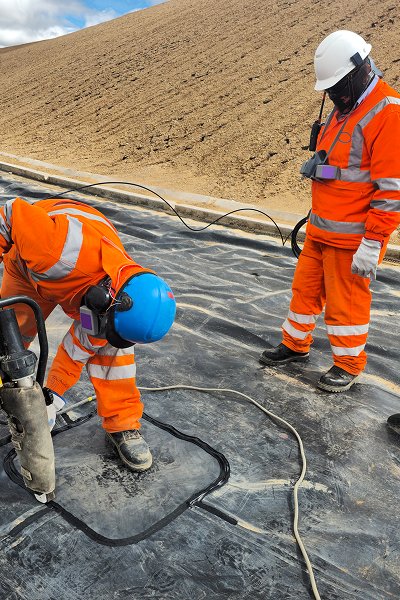What is Drainage Cell ?
Drainage Cell is a composite functional material or structural system used to collect, drain, store and disperse underground or surface water. Its purpose is to improve the moisture environment around or at the bottom of the structure. It is often used in building foundations, slopes, roadbeds, greening, roof gardens, underground garages, water conservancy projects and other scenes.


Percolation
This is the first step in the work of the drainage unit, which mainly refers to how water enters the drainage system:
Surface rainwater or underground seepage water gradually penetrates downward through the soil and structural layers;
Water first contacts the geotextile or filter layer on the surface of the drainage unit;
This process is controlled by the permeability of the upper covering soil, slope, rainfall intensity and underlying conditions.
Filtration
Before entering the drainage core material, the infiltrated water needs to pass through the filter layer (usually non-woven geotextile) for particle interception treatment:
Anti-filtration principle: The pore size of the geotextile is controlled within a suitable range to prevent fine particles from entering the drainage channel and prevent blockage;
At the same time, it allows water to pass quickly to ensure smooth drainage;
The filtration effect is affected by the fabric opening diameter (O95), thickness, water permeability, etc.
Drainage
After being filtered, water flows into the core material structure of the drainage unit (such as three-dimensional mesh core, corrugated channel, drainage concave and convex plate, etc.), and begins to be organized and directed horizontally or vertically drained:
The drainage core material forms a stable void structure (such as cross channel, honeycomb grid, three-dimensional pipe groove);
Under the action of gravity or pressure difference, water flows along the slope and direction set by the drainage unit;
Rapid drainage can be achieved in conjunction with the laying slope (≥2%).
Discharge
The water flow finally converges to the discharge port and is discharged to the following structures or areas:
Collection wells, blind ditch systems, drainage ditches, etc.;
Or it flows into rainwater recycling systems, water storage modules, and storage tanks;
In vertical drainage units, it is introduced into the surface or underground water pipe network.
Main material composition of drainage unit
Filter layer material (Filter Layer)
Common materials: Polypropylene (PP) or polyester (PET) non-woven geotextile
Function: Prevent fine particles from entering the drainage layer, prevent clogging, and allow water to penetrate
Key performance: opening diameter (O95), unit area mass (g/m²), permeability coefficient (cm/s)
Core material (drainage body/water guide layer)
Common materials: high-density polyethylene (HDPE), polystyrene (PS), polypropylene (PP)
Structural form: three-dimensional drainage mesh core, concave-convex drainage board, special-shaped hollow core, corrugated pipe, etc.
Function: Build a stable water channel, provide drainage capacity and compressive support
Surface protection layer or shell (optional)
Function: Protect the core material from damage or structural displacement in special occasions (such as rainwater modules, underground water storage systems)


Composite Use with Other Geosynthetic Materials
| Material | Function |
|---|---|
| HDPE Geomembrane | Provides an impermeable barrier to prevent water leakage. |
| GCL (Geosynthetic Clay Liner) | Enhances impermeability and works as a backup seal. |
| Geocell | Stabilizes the fill material and protects the drainage core. |
| Nonwoven Geotextile | Acts as a filter and protects the drainage core from soil intrusion. |


